Welcome to our exclusive interview series where we sit down with the voices behind our Latin America Travel Festival.
Discover what drives these travel experts, their unique connections to Latin America, and the stories that fuel their adventures.
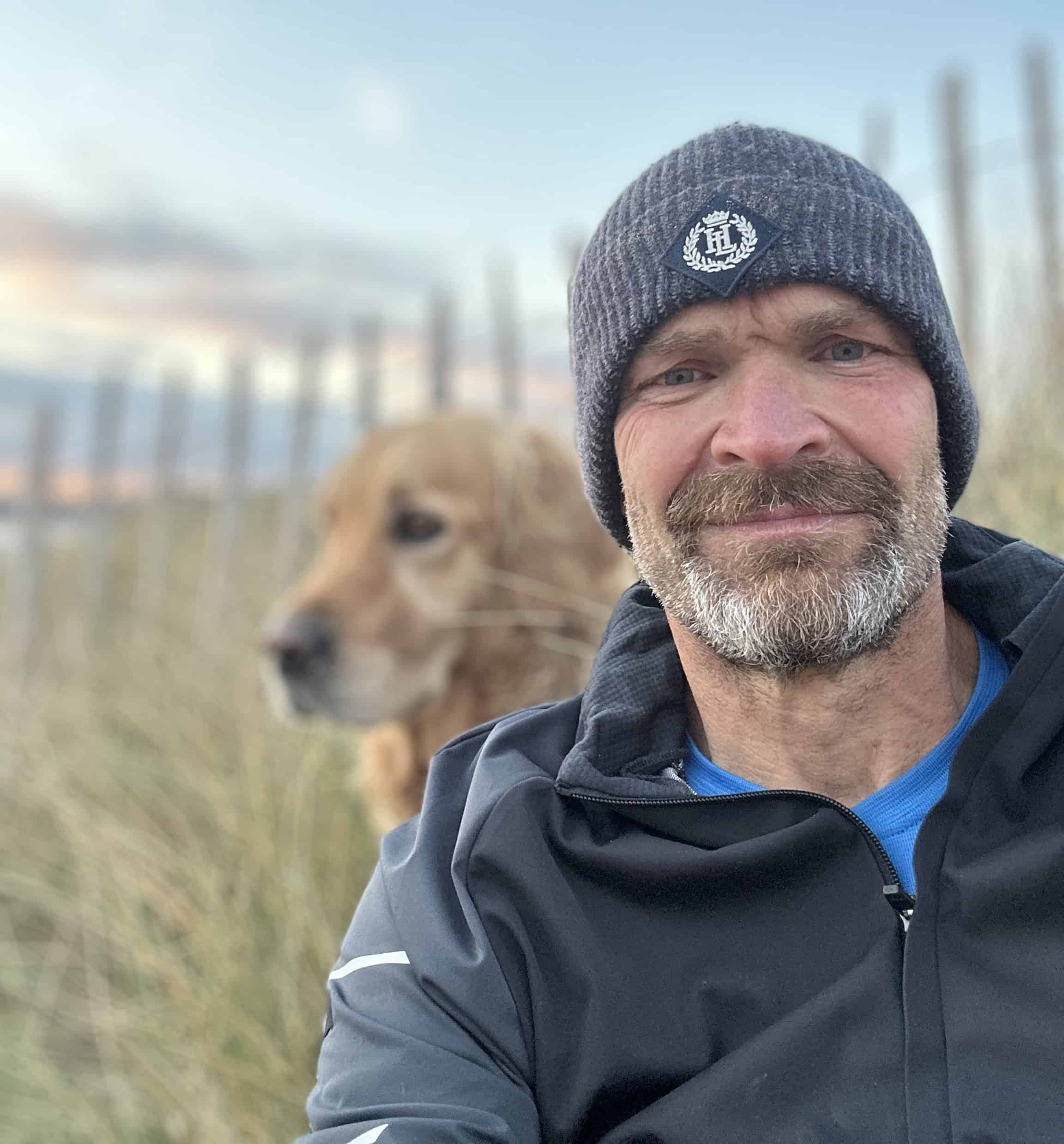
Monty Halls – Broadcaster, Travel Writer and Marine Biologist
You’ve worn a lot of hats – marine biologist, travel writer, broadcaster – how did you get into all of this?
It might be stating the blindingly obvious, but the starting point was always a real desire to travel. The mystery is where that came from. I had a fairly nomadic upbringing, as my dad was RAF and we were posted all over the place, so being somewhat nomadic is all I ever knew.
I guess all travellers are seeking something – whether that be adventure, new sensations, new cultures, testing themselves, or simply getting away from what they know. We’re all explorers in that regard. Whatever it was I was looking for, I’m still on the hunt!
You’ve travelled widely, but what is it about Latin America’s marine environments that keeps drawing you back?
It’s easy to go for the clichéd Caribbean experience – and why not, it’s the best visibility in the world, easily accessible reefs, with a well established diving infrastructure. There’s a lot to be said for that, but as I pushed further afield it was the hidden gems that captivated me.
Fernando de Noronha off Brazil, the Socorro Islands, the Galapagos – these locations offer really wild encounters, and are challenging diving to boot. I’ve never dived the west coast of South America really, so would love to explore there. It’s a vast, wild environment, where nature still holds sway over man.
As President of the Galapagos Conservation Trust, what’s one moment in the Galapagos that reminded you why the region needs protecting?
When we made the series ‘My Family and the Galapagos‘ in 2017, the week we arrived a longline vessel had just been apprehended illegally fishing in the archipelago. And so as we moved into our house in Puerto Ayora, the main town on the islands, there was absolute uproar as local people took to the streets to demonstrate. The images of the sharks piled atop one another on board were horrendous, including a juvenile whale shark.
It galvanised everyone – us included – to try to raise awareness of the threats the islands face. One of our great friends there, Macarron, wept as he talked to the camera: ‘everyone, around the world, it’s now or never.’
Can you give us a preview of the Comunidad Azul project? What kind of impact do you hope it will have in places like Costa Rica or Patagonia?
The project will take a small team, and travel to three iconic destinations – Patagonia, Costa Rica, and Baja. Here we’ll work with local operators to explore and celebrate local community conservation initiatives, and distribute the Big Blue Bag – a system that allows people to sample their own stretch of coastline for key markers of ocean health. It’s a pioneering project, where team members will genuinely impact local schools, groups, and communities.
We’ll also, I hasten to add, stay in some of the best resorts and hideaways in Latin America, so it’ll be a stand alone experience in its own right. But there’s that added element of enhancing community citizen science, and engaging with local people doing good work.
What is meant by ‘citizen science’? How can everyday travellers get involved in protecting the ocean?
‘Citizen science’ is an emotive term. There are a few members of the scientific community who can be dismissive of the value of ‘normal’ people providing data. I take a completely alternative view – I believe it’s the only way forward if we’re to reveal trends on our shallow seas on a planetary scale.
There are hundreds of thousands of mobilised, engaged people around the world who just want to contribute, all we need to do is make sure the sampling protocols they use are consistent, and add value in terms of the data they create. That’s why we created the Big Blue Bag – anyone can use it, it measures four key markers of marine ecosystem health, and all the data gets uploaded to an app. But there’s loads of other good citizen science programmes out there, which can only be a good thing.
What’s one species or marine ecosystem you’ve encountered in Latin America that more people need to know about – something that really took you by surprise?
The Humboldt squid in the Sea of Cortez was a good one! Mind you, I think they’ve been pretty much fished out now. I simply can’t pick one, it’s impossible, but contenders would be the giant mantas off Roca Partida, spinner dolphins off Fernando de Noronha, giant ocean sunfish off Tortuga Island in the Galapagos, bottlenose dolphins working co-operatively with the fishermen off Brazil, and whale sharks at Wolf and Darwin.
There are riches indeed around the coast of Latin America, and I’m sure as soon as I’ve answered this question many more will spring to mind! But for now they’re a reasonable top five. In fact, no, hang on…
About Monty Halls
Monty Halls is a broadcaster, travel writer, and marine biologist who has travelled extensively in South America in his capacity as President of the Galapagos Conservation Trust and HX Ambassador. His festival talk will explore the extraordinary marine environment of the region, based on his expeditions in Brazil, Belize, and the Galapagos. He will also introduce the Comunidad Azul project planned for 2026, a chance to celebrate and facilitate citizen science in Costa Rica, Patagonia, and Baja.
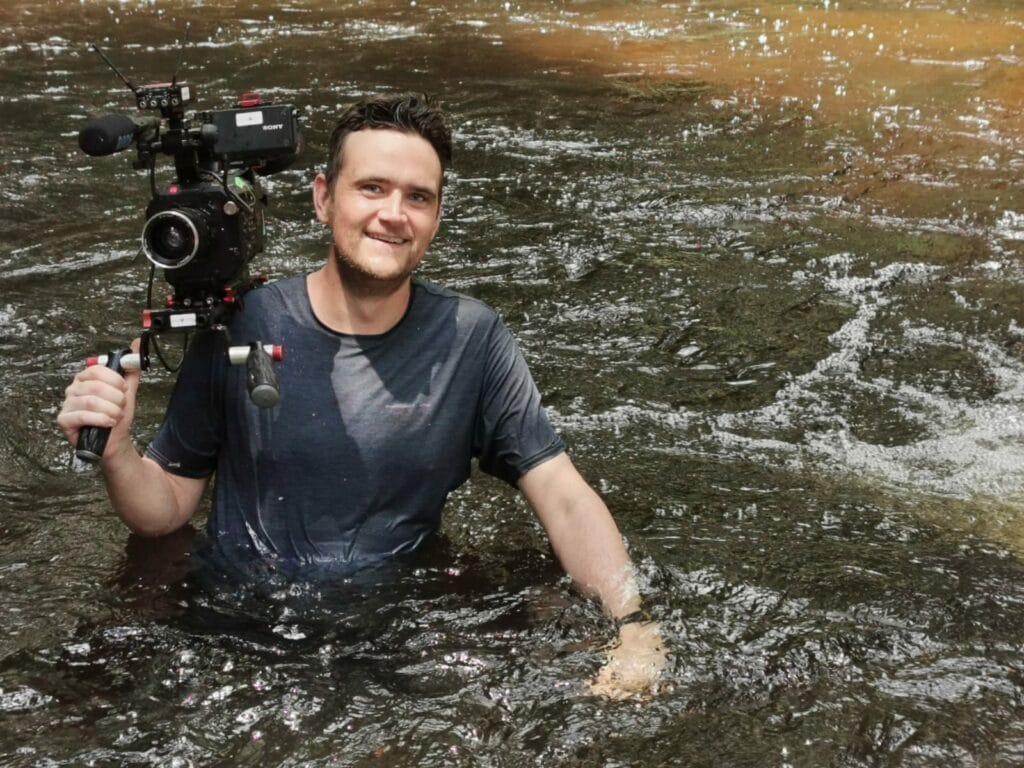
Rory Jackson – Director of Bruce Parry’s Tribe
How did you get into documentaries?
I first started making documentaries at university, and later got myself a receptionist job at a TV company in London that mostly made cooking programmes. From there, I tried my best to find low-level work on the kinds of documentary films I wanted to make, working for experienced directors and learning the trade from the bottom up. In many ways it works like an apprenticeship, and I’ve been very lucky to learn from some incredibly talented filmmakers.
What was your biggest trepidation going into the jungle with Bruce Parry? How did you prepare for a trip like this?
I suppose there are two types of preparation before an expedition. Firstly, and most importantly, it’s an enormous logistical undertaking. This part of the north-western Amazon is not somewhere you can just buy a ticket to, so getting a film crew, supplies, and all the necessary equipment there was no small feat.
Frank Films had decided the best way to shoot the series was to use self-shooting directors like myself, keeping the crew to a minimum. Our team of six was able to integrate into the village, and I think that’s what makes the films feel like a true, authentic adventure.
With that comes a certain amount of risk and so my main trepidation was for my own safety — I’d just had my first son, who was only eight months old. Looking at high accident rates for the single-engine planes that would take us into the region, and working out the evac protocol if one of us were bitten by a fer-de-lance snake, was sobering.
What was your hairiest moment when you were there?
There was one moment when I was packing up my camera equipment into peli-cases to store them overnight at camp. (We had a roof but no walls, so everything had to be watertight.) I reached for my tripod and immediately froze, as I thought I saw one of the legs moving on its own. Turns out it was a very small but very colourful snake.
We immediately called for one of our Waimaha friends to come and take a look. He promptly took it to the bush on the edge of the camp, and killed it, telling us it was potentially deadly.
What was your biggest takeaway from the experience? Did you learn anything that stuck with you?
What really stayed with me from my time with the Waimaha was the perspective it gave me as a new father. The Waimaha have chosen to live a life closely connected to the natural world, and that seems to build remarkable resilience.
Children help forage in the jungle from a very young age, with four-year-olds running barefoot on forest paths carrying machetes. They seemed joyful, resilient, and deeply engaged with one another. It made me want to prioritise my own son’s connection with nature, and to be open-minded about what counts as “risky play.”
I’ve also learned that different ants have different flavours and that I personally prefer them when lightly toasted.
Where are you headed next? And why?
Most recently I’ve been exploring the world of anabolic steroids in a three-part BBC series called Confessions of a Steroid Gang, which is a very different programme altogether! For now, I’m taking some time to be with family while I wait for the next adventure to arrive in my inbox.
About Rory Jackson
Rory Jackson is a documentary filmmaker whose career has taken him around the world – from the jungles of the Amazon and prisons in South Africa to communities in Africa, Southeast Asia, and Latin America. He is known for directing films in complex, ands sometimes hostile environments, bringing back compelling human stories from difficult places.
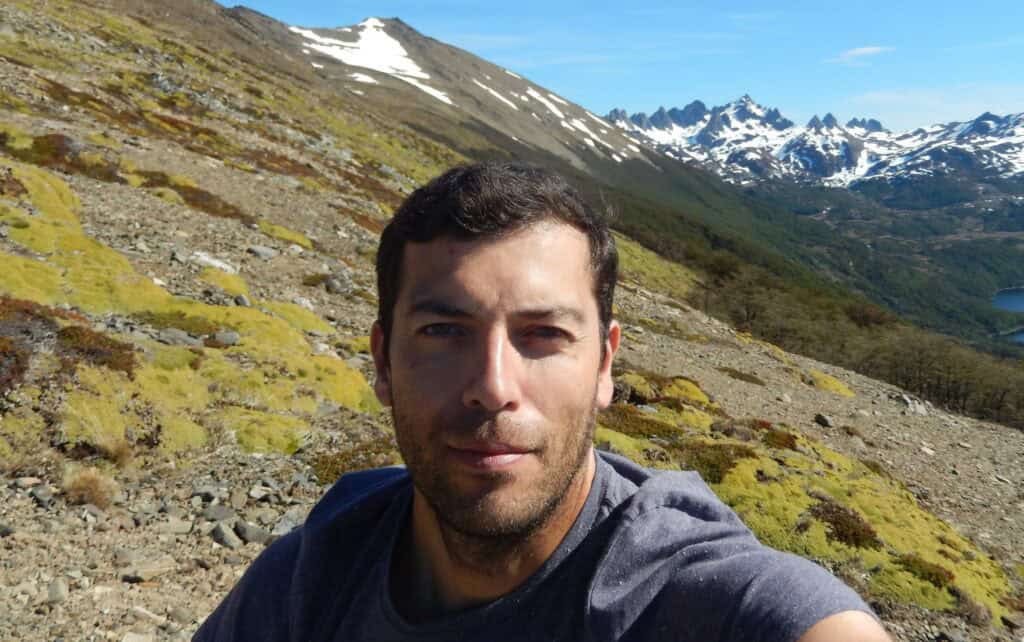
Shafik Meghji – Journalist, Travel Writer, Author, Editor and Broadcaster
What inspired you to start writing about travel, and how did your career as a journalist and author begin?
My parents instilled a love of travel in me from an early age, but when I was growing up I wanted to be a sports reporter. After doing a politics degree and then a post-graduate diploma in newspaper journalism, I got a job at the Evening Standard. Although I enjoyed the work, wanderlust soon kicked in, and I decided to resign and go backpacking around India and South America. It was the best decision I ever made.
I fell in love with South America, in particular, and my time there prompted me to shift course into travel writing. I wrote my first articles while I was away and when I returned home I sent off countless emails, letters and sample pieces to every travel publication and publisher I could think of, but barely got a response. Eventually, after months and months, I was offered my first guidebook gig – updating The Rough Guide to the Baltic States – and the rest is history.
You’ve travelled extensively across Latin America – is there one place that’s had a lasting impact on you, and why?
It’s tough to pick a favourite, but if pushed I’d go for Patagonia and Tierra del Fuego. Since my first visit two decades ago, I’ve been captivated by the dramatic landscapes – the ice fields of Parque Nacional Los Glaciares, the wilderness of the Dientes de Navarino range, the seemingly endless steppe of Chubut – as well as the turbulent history, rich cultures and diverse wildlife. The sense of space and isolation also keep drawing me back.
Patagonia and Tierra del Fuego have long been mythologised, but the reality of the region is far more illuminating and enthralling.
Your new book Small Earthquakes explores Latin America in a unique way – what was the spark behind it, and what do you hope readers take away?
During my time living, working and travelling in South America, I kept stumbling upon unexpected connections to Britain – a graveyard of graffitied British trains on the edge of the world’s biggest salt flat, a notorious Amazonian rubber trader with a home in Hampstead, a tall tale about a British diplomat stripped naked and kicked out of La Paz. They were part of a history I wasn’t taught about in school and didn’t see represented in the media or popular culture.
The stories that most captured my imagination come from the Southern Cone – Argentina, Chile and Uruguay – and became the subject of Small Earthquakes. The book pieces together a shared history spanning five centuries and featuring cowboys and wool barons, pirates and polar explorers, footballers and missionaries, radical MPs and pioneering journalists.
I hope it gives readers an insight into Britain’s impact on Argentina, Chile and Uruguay, from sparking wars, forging national identities and redrawing borders to its tangled role in their colonisation and decolonisation. And how these countries, in turn, have shaped Britain in profound and unexpected ways, from Fray Bentos to the Falklands.
At the festival, you’ll be speaking about your experiences in the region – what can audiences look forward to from your session?
I’ll be sharing some of the most memorable experiences from my research trips for Small Earthquakes, ranging from the Atacama to Tierra del Fuego, South Georgia to Easter Island.
They include exploring a ghost town in one of the world’s driest deserts and a far-flung ranch in the sub-polar tundra; visiting rusting whaling stations in the South Atlantic and riding an isolated railway built by convicts; and journeying to the southernmost city on the planet and a crumbling port known as the ‘Jewel of the Pacific’.
These stories provide a snapshot of Britain’s forgotten connections with South America – and underline why they’re still important today.
Has there been a moment during your travels when everything went wrong, and you ended up with a great story because of it?
When I was researching my first book, Crossed Off the Map: Travels in Bolivia, I was caught in a huge snow storm while travelling across the Salar de Uyuni, the world’s biggest salt flat. It forced us to divert wildly off course to avoid being stranded in this isolated, high-altitude landscape. The conditions were treacherous and we had to stop regularly to dig the jeep out of snow drifts, before eventually making it to safety.
Although it was a nerve-wracking experience, the detour took me to remote, rarely visited parts of this otherworldly region I would otherwise have missed. It also provided some colour and drama for the narrative of the book.
What advice would you give to aspiring travel writers looking to tell meaningful, place-based stories?
Aim to develop your own voice and look for stories that aren’t being told. Read widely – many of the ideas for my books and features were originally sparked by local newspapers, historical research, academic journals and scientific papers.
Be nosy, curious and open to the world, as well as reactive – it’s easy to start your research with a fixed narrative in mind, but it’s better to be led by what you find. And generally the place and the people in it are the most interesting parts of the story – only put yourself into the narrative if it genuinely adds something insightful.
About Shafik Meghji
Shafik Meghji is an award-winning travel writer, journalist, author, editor, book critic and broadcaster specialising in Latin America and South Asia, with a particular focus on responsible travel, food, history, culture and human rights.
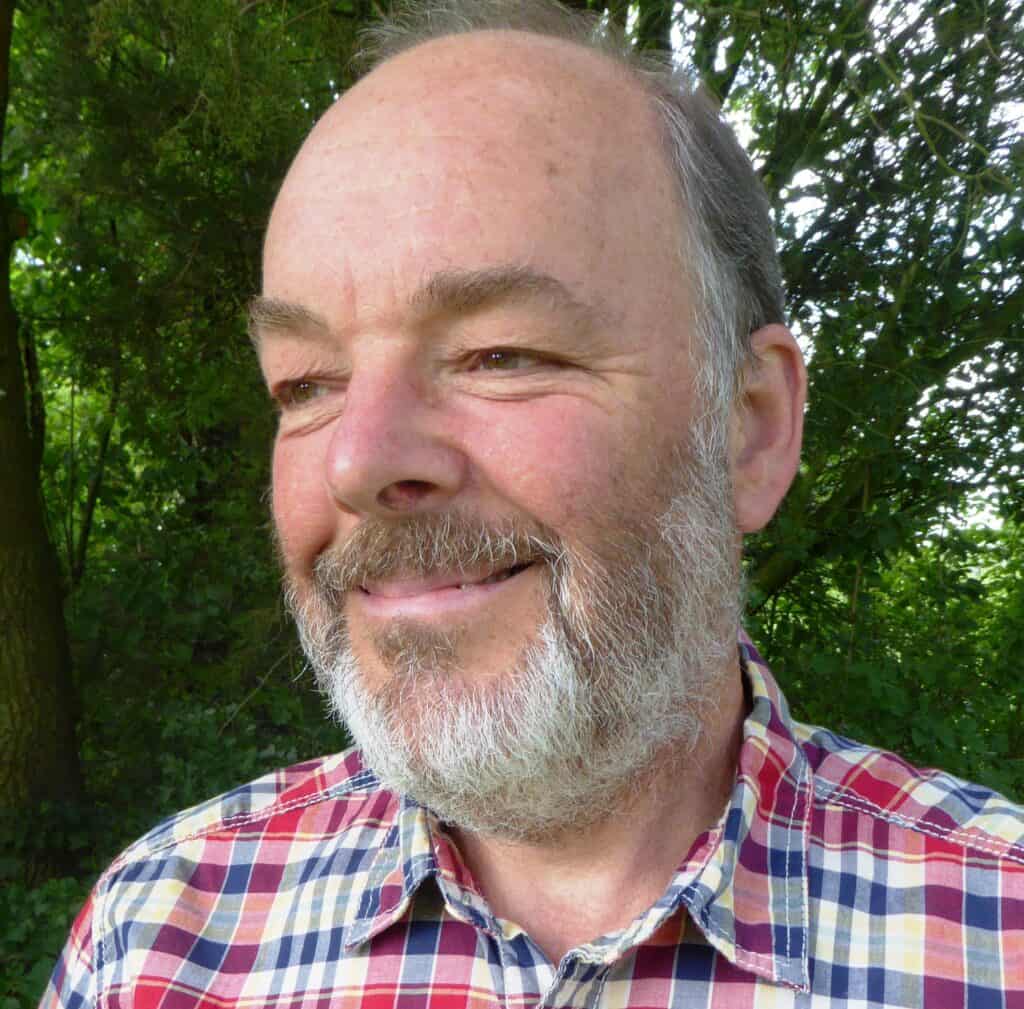
Ben Box – Author and Travel Writer
You’ve been writing about Latin America for over four decades – what first drew you to the region, and what keeps you going back?
When I started freelance writing in 1980, my interests and specialities lay in Spain and Portugal, but that same year, my wife Sarah and I went on a trip to Mexico, and everything about it — the culture, the history and archaeology, the food, the landscapes — changed my perspective entirely. After that trip, I was lucky enough to be given commissions, including on the South American Handbook, and to travel to all points south to Cape Horn.
Latin America became far more than just a source of work for me. It was, and still is, where many of my interests lie, where many great friendships have been made and, even after over 40 years of travel, where there are still countless places and experiences to discover.
You edited the South American Handbook for years – what was it like to be the custodian of such an iconic guide? nd what makes it special?
The more I learnt about Latin America, the more I appreciated the depth of information found in the South American Handbook. Much of this was added to, corrected, and on occasion, pulled apart by a community of travellers, academics, business travellers, writers, subeditors and publishers. All had the same aim of sharing their knowledge and love of Latin America, and my job was to marshal that input every year to fit into the confines of the book.
A guidebook is not a travelogue; it is a practical companion, stuffed full of facts with scant room for personal impressions. But the Handbook aims to keep that practicality as lively as possible, without dictating to the reader. I always viewed the book’s purpose as giving the reader as much choice as possible.
You’ve written guidebooks to a huge number of countries – is there one place that continues to surprise or inspire you?
In a word, no. All of Latin America inspires me. I suppose that might risk being a Jack of all trades, master of none. But why limit oneself?
Thanks to the Handbook I have been able to experience all the variety of the region, how neighbouring countries can be so different and yet how many common threads run north to south, east to west. Following those threads, be they in traditions and culture, ornithology, architecture, politics, whatever, is for me a strong motivation to travel and be open to what might be around the next corner.
You’re also passionate about Latin American cuisine, do you have a favourite dish or food-related memory from your travels?
I have eaten in all manner of places, from communal kitchens to official dinners to restaurants aspiring to be on the ‘world’s best’ lists. It’s not so much the dishes that I recall, but the context and the company: for instance a tasting menu of locally-sourced ingredients on the slopes Cotopaxi volcano in Ecuador; fish straight from the sea in a lodge near Nuquí on the Colombian Pacific coast; freshly pressed cashew juice in a fishing family’s house at Praia do Canto Verde on the northeast coast of Brazil; meals rustled up in the kitchens of community guesthouses in Sud Llípez, Bolivia; I could go on.
As for a specific dish, probably something everyday, like ceviche; empanadas or tortillas with their umpteen fillings; or pão de queijo (associated with Peru, Argentina, Mexico and Brazil, respectively). Almost every country has its own versions of these essential items and, to me, they are fundamentally Latin American – outside the region they cannot compare.
What advice would you give to someone travelling to Latin America for the first time – whether practical, cultural, or philosophical?
Don’t try to do too much; distances can be far greater than you think and nowhere deserves to be skated over.
Be flexible; things change, the unexpected arises, and it’s good to go with the flow. I realise that nowadays travel is much more dependent on booking in advance, but if the opportunity presents itself to (as a dear friend of the Handbook put it) go beyond Google, take it. Make that detour; attend that festival; go to that show; try that food…
Thirdly, learn some Spanish or Portuguese either at home, or, if you are on an extended trip, when you arrive. Not only will you be able to ask for/explain what you want, but you will also be able to understand what you are told in reply.
About Ben Box
Ben Box worked as a freelance writer before becoming editor of the South American Handbook in 1989. Ben has written guidebooks to Bolivia, Brazil, Ecuador, Peru, The Guianas, Central America and Mexico. He is also the author of Bradt’s Traveller’s Cookbook: South America, an appetising guide to South American cuisine, and has contributed to newspapers, magazines and learned tomes.
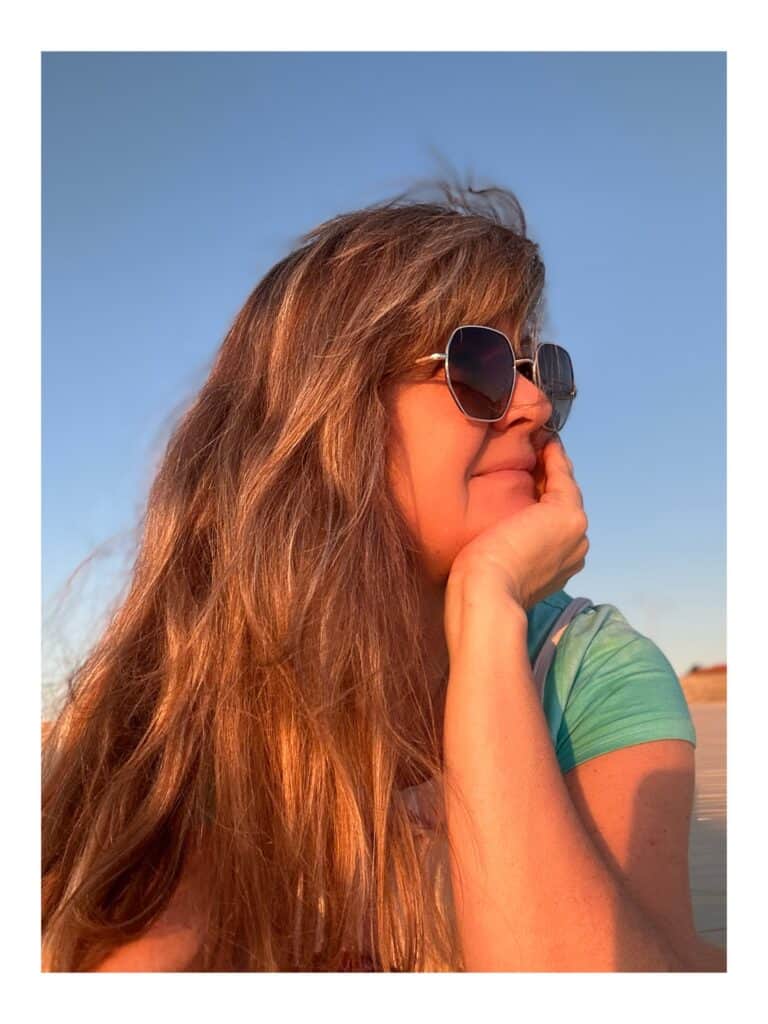
Nori Jemil – Travel Photographer and Writer
What first drew you to travel photography, and how did it become your profession?
I’ve had a camera in my hand for as long as I can remember, and always loved to travel. But it was moving to Chile in 2004 that changed my career direction.
An aerial photo of Mount Fitz Roy and Cerro Torre in El Chaltén, Argentina, was the first image I ever entered into a competition – and it was runner up in Wanderlust magazine’s Photo of the Year. Another, taken in Antarctica the same year, also placed second in an international photography contest. Around the same time, I took a diploma in digital photography in Santiago, (until very recently, I still preferred to use Photoshop in Spanish!), so you could say, without the influence of Latin America, I may never have become a professional photographer.
After another top ten placement with Wanderlust the following year, I ultimately won their Photo of the Year in 2010, and it was a commission to Australia’s Northern Territory and subsequent publication of my images that set me on my path. Regular work with National Geographic Traveller UK followed, and I started to both write and photograph travel features, as well as work as an author and expedition photography guide and lecturer.
Latin America is a visually stunning region – do you have a favourite destination there to photograph, and why?
That’s a difficult one to answer, given the sheer range of destinations, from North and Central to South America – not to mention the innumerable islands. I travelled extensively in Latin America after moving to Chile, spending every spare moment of the six years I lived there either backpacking, road-tripping or hiking around – from Brazil and Ecuador to Colombia and Uruguay.
The Atacama Desert in Chile is spectacular in terms of landscapes, while the nearby towns in Argentina’s far north are rich in culture. I loved photographing people in Panama and Guatemala, and Peru was the first country I ever visited in Latin America, so it has a special place in my heart. I could wax lyrical about the snowy peaks and green lagoons of Huaraz, Mexico’s cenotes and Mayan ruins, or Argentina’s gaucho and food culture. But, if I’m forced to narrow it down right now, I’d say it’s the recent years I’ve spent working in Chile’s far south that would make me single out the glaciers, pampas, people and wildlife of Patagonia and Tierra del Fuego.
You’re running a masterclass at the festival – what can attendees expect to learn or experience in your session?
Nearly everyone who travels for pleasure has some kind of camera at their disposal, whether that’s a Smartphone or a DSLR, or something similar. And there are some basic principles that can help to optimise your chances of getting great shots while on the road, whatever kit you have. I’ll refer to my book, The Travel Photographer’s Way, as I talk through everything – from planning your trip and knowing how to use your camera, to lens choices and what to do with all those images once you arrive home.
Using a range of published photos from my own travels in Latin America, we’ll explore the key elements of photography, including composition, exposure, depth of field and focal points. As well as travelling on a journey through Latin America from the Yucatán all the way down to Cape Horn (which should be fun in itself), it’ll be especially helpful for anyone who’s keen to go that little bit further and create a photo story worthy of publication, enter a competition or simply have images that are good enough to frame and mount on their wall at home. There’ll be a Q and A at the end too, so lots of opportunities to ask about the logistics and etiquette of travelling and photographing in different parts of Latin America.
As one of the judges of our Latin America travel photography competition, what will you be looking for in a winning image?
Having judged a fair few competitions over the past decade, I can say with certainty that one never quite knows what to expect, and the winning image can come as a bit of a surprise! For this festival though, we’ll be looking for something that communicates the essence or a flavour of some aspect of Latin America. But, given that this has been left fairly open, I’m looking forward to seeing how photographers have interpreted what that means.
Most importantly, I’ll be looking for something original, impressive or quirky, with composition that draws the eye and a little bit of flair or technical competency – though great impact can be made even if the photo isn’t a ‘perfect’ technical shot. As it’s in celebration of Latin America, a sense of place or something that celebrates the culture of the destination is likely to catch our attention – or win our hearts.
What’s the most memorable travel image you’ve ever taken – and what’s the story behind it?
One image that springs to mind is a photo taken in Chilean Patagonia. I was on a trip through Argentina and crossing into Chile’s fjord system on an expedition ship, when we arrived at Pía glacier. The striated rock platform and huge glacier were drawing my attention in one direction, when I saw a large piece of ice that had been washed up onto the moraine lower down. I needed to get closer to the water’s edge to make it my focal point (which involved some negotiation with the safety conscious guides). The sky was a bit ominous and there was light rain too, so I decided to set up my tripod and take my chances with a filter and a long exposure.
The resulting image, with the movement of the glacial lagoon and the drama of the dark skies and mountains, juxtaposed against a chunk of white ice, seems to have worked; the photo was part of a portfolio that helped me win the British Guild of Travel Writers’ (BGTW) Photographer of the Year in 2017. It’s been published several times since then, won LATA’s Best Published Latin American Travel Image in 2023 and was part of an exhibition that toured London, Barcelona and Milan. It’s been used to promote trips to the Chilean fjords and even graces the membership card for the BGTW. Plus, it is included in my book and remains a favourite image of mine, proving that one doesn’t need a great deal of time or the perfect conditions to create a decent image.
What’s one piece of advice you’d give to someone just starting out in travel photography?
That’s easy, and I’ll be brief in my answer – come along to the festival and find out!
About Nori Jemil
Nori Jemil is an award-winning photographer, writer, teacher and videographer. Her work has appeared in publications including National Geographic Traveller, BBC Travel, Adventure.com and Conde Nast Traveller. Over the past decade she has won numerous awards, including Travel Photograph of the Year from Wanderlust travel magazine, and Photographer of the Year from the British Guild of Travel Writers.
She teaches film and photography in London and on specialist overseas tours. Her photos have been exhibited in London, Milan, Barcelona and Madrid. She regularly takes on public speaking engagements at literary festivals, travel photography events and as part of National Geographic Traveller’s Photography Masterclasses.
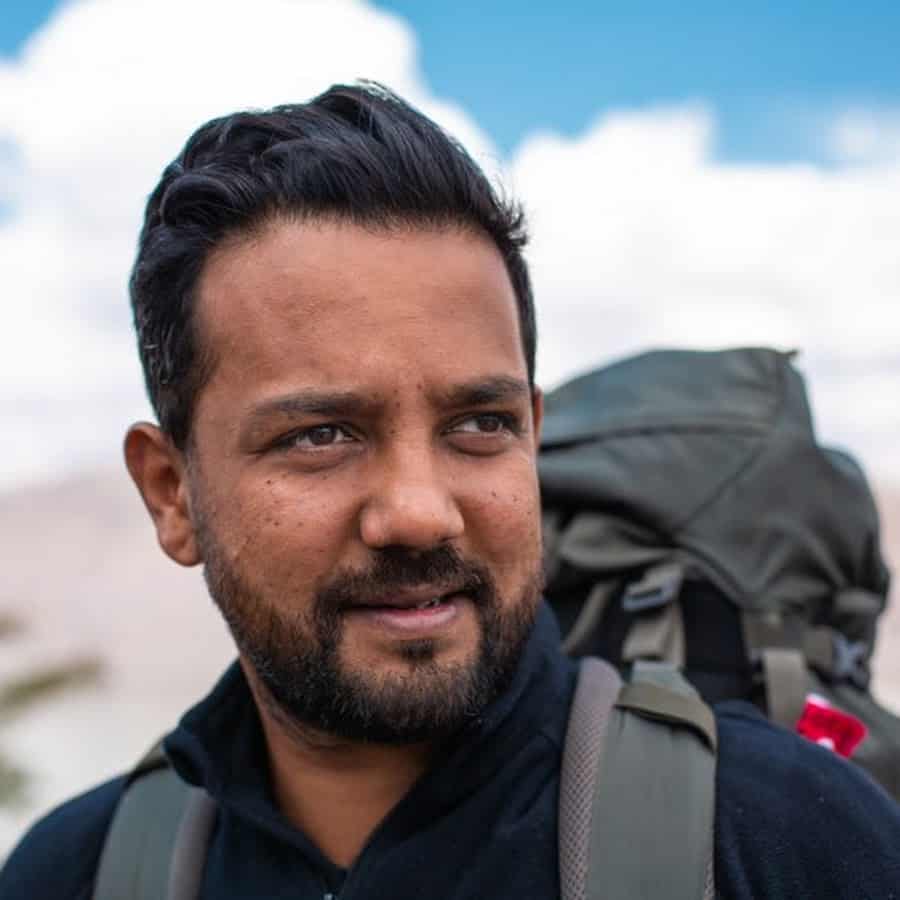
Emon Choudhury – Winner of Race Across the World Season Two
What made you want to sign up for Race Across the World in the first place?
I’ve always had a sense of adventure and love pushing myself, but Race Across the World was something completely different – it was raw, real, and unpredictable. I wanted to experience the world in a way that money or comfort couldn’t buy. A big part of my motivation came from my late dad, who taught me the importance of helping others. I saw the race as a chance to challenge myself and, hopefully, make a difference along the way.
What was the hardest part about travelling without phones, flights or much money – and what did you learn from the experience?
At first, it was tough – no phones, no internet, no safety net. You suddenly realise how much we rely on those things. But it forced us to connect with people face-to-face, and that was the real gift. The hardest part was seeing poverty up close – especially the children living in really difficult conditions. It changed me completely. It opened my eyes and made me want to do something meaningful to help.
You travelled with your nephew Jamiul – how did the race affect your relationship? And what advice would you give to people thinking about taking an extended trip with their family?
It made us closer, without a doubt – but it also tested us! Travelling together like that brings out every emotion. We had to learn patience, communication, and trust. I’m proud of how we supported each other through the tough moments. For anyone travelling with family, my advice is simple: be honest, forgive quickly, and focus on the bigger picture. You’ll come home with memories that bond you for life.
Do you have any tips for people thinking of applying for the show?
Go for it – but don’t do it for fame or money. Do it for the experience and what you’ll learn about yourself. You’ll see the world in a completely different way. Be open, humble, and willing to connect with people. And when it gets tough, remember why you started. Those are the moments that change you the most.
Was there a place on your route that really surprised you or stuck with you – and why?
Bolivia and Peru really touched me. The poverty we saw there – especially among children – stayed with me long after the cameras stopped rolling. It was heartbreaking, but also inspiring to see how resilient and kind people were despite having so little. That experience changed me deeply, and it’s why I decided to donate all of my prize money to help children living in poverty across South America. That decision was life-changing – it set me on a new path of supporting children’s charities and speaking up for those who don’t have a voice.
Has winning the race changed the way you travel now?
Completely. Before the race, travel was about seeing places. Now it’s about connecting with people and giving something back. Winning gave me a platform, but it also gave me perspective. I’ve become a real advocate for children’s charities and for using travel to do good – whether that’s raising awareness, fundraising, or inspiring others to make a difference. Every trip now has more purpose behind it.
About Emon Choudhury
Emon Choudhury is a businessman from Bradford and winner of BBC’s Race Across the World with his nephew, Jamiul. They travelled across South America on a journey that pushed them to their limits and completely changed how they see the world. Since the show, Emon has been focused on giving back – raising money for charities, supporting children living in poverty, and continuing his late father’s legacy of helping others through running and community projects. When he isn’t travelling or fundraising, he is busy running his businesses in Yorkshire and spending time with his family.
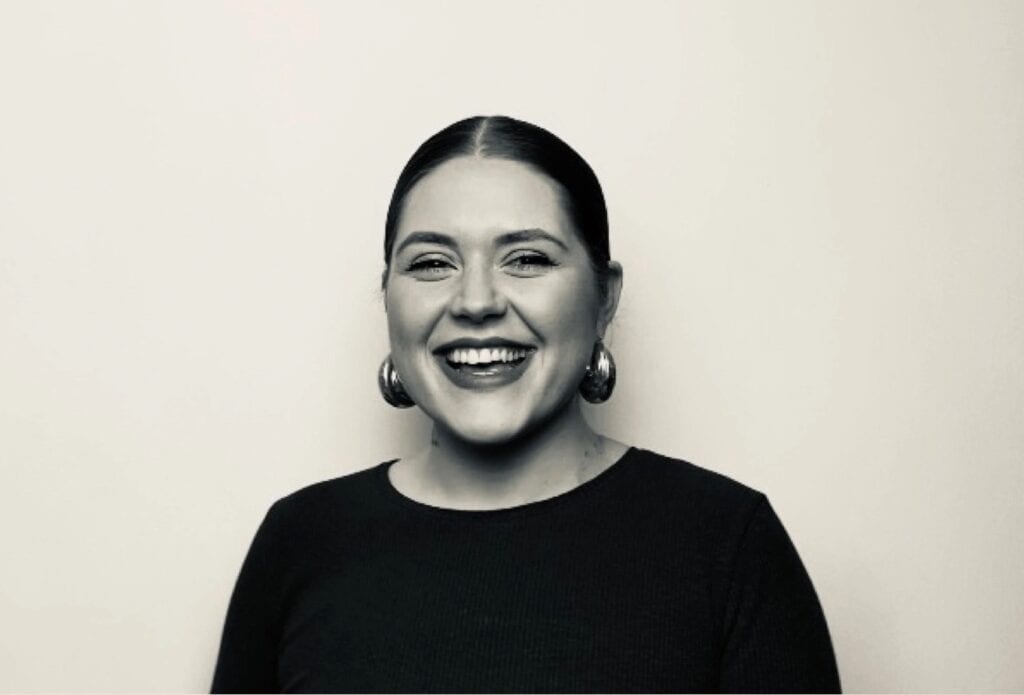
Mary Ellen Moriarty – Celebrity Race Across the World Contestant
Travelling across South America without flights or much money must have thrown up surprises. What was the most unexpected challenge you faced during the race?
Budgeting – hands down! We completely underestimated how chaotic it would be juggling all the different currencies. Over the course of the race, we had to swap between US Dollars, Brazilian Real, Uruguayan Peso, Argentine Peso, and Chilean Peso. Every leg we’d end up short, sprinting around trying to find a Cambio before we could buy tickets or risk paying in dollars and losing out big time. It became a full-time job just trying not to get ripped off!
You raced alongside your cousin Kola – how did your family bond shape the way you tackled obstacles and made decisions on the road?
Me and Kola grew up together like brother and sister and we definitely fight like it too! But the upside is we’re brilliant at bouncing back. We can go from a full-blown argument to laughing five minutes later. We don’t take ourselves too seriously, which was crucial during the race. Even when things went sideways, we just kept saying, “right, lets keep this show on the road.”
The race often forced split-second decisions. Can you share a moment where improvisation made a big difference?
Honestly, I think we improvised the entire race! But one standout moment was when we somehow scored a lift (paid ofc) from Petrolândia – the Sunken City – all the way to Lençóis. Eight hours, overnight, sitting upright in a tiny car…not exactly luxury travel! But it meant we could catch up with the other teams and get back in the game. Totally worth the cramp.
Being on camera for a reality show can be intense, especially for someone who isn’t used to being filmed. How did you navigate that alongside your travels?
Our camera crew were absolute legends and became part of the journey. Massive shoutout to Studio Lambert for assigning us an Arsenal fan as our DP; it meant I could escape Kola’s football chat for at least five minutes! By day two, I’d completely forgotten they were a professional film crew. It just felt like having that one annoying family member constantly filming you on holiday but in the best way.
Was there a landscape, cultural experience, or local encounter that genuinely took your breath away?
Oh, that’s tough…but the final leg from Tilcara to San Pedro absolutely blew me away. We crossed the desert, climbed into the mountains, passed salt flats, and drove through what felt like every climate in one day – blazing sun, rain, snow, and then a rainbow as we crossed into Chile. It was like nature was throwing a grand finale just for us. It honestly felt symbolic of our journey – wild, unpredictable, but completely magical.
Having completed the race, has it changed the way you approach adventure or long-term travel plans?
Absolutely. I’ll always choose the road less travelled now. I believe that’s where the real magic happens. You connect with locals, see how people actually live, and stumble on stories and hidden gems you’d never find on TripAdvisor. The less polished experiences always end up being the most unforgettable.
About Mary Ellen Moriarty
Mary-Ellen is best known to travel audiences for her appearance on BBC One’s Celebrity Race Across The World. In 2024, she set off on a once-in-a-lifetime adventure, racing thousands of miles across Brazil, Uruguay, Argentina and Chile, without the comforts of phones, flights, or modern luxuries. Every step of the way meant navigating language barriers, tight budgets, and unpredictable challenges but also experiencing the extraordinary generosity of strangers and the deep joy of cultural connection.
That journey taught her that the heart of travel isn’t just about where you go, but how you get there, and the people you meet along the way.
Today, she’s studying to become a social care worker and mentoring young people in her community. Her curiosity about people, culture, and stories drives both my work and my travels, and she believes that every journey – whether across continents or in our own communities – has the power to shape us, connect us, and change the way we see the world.